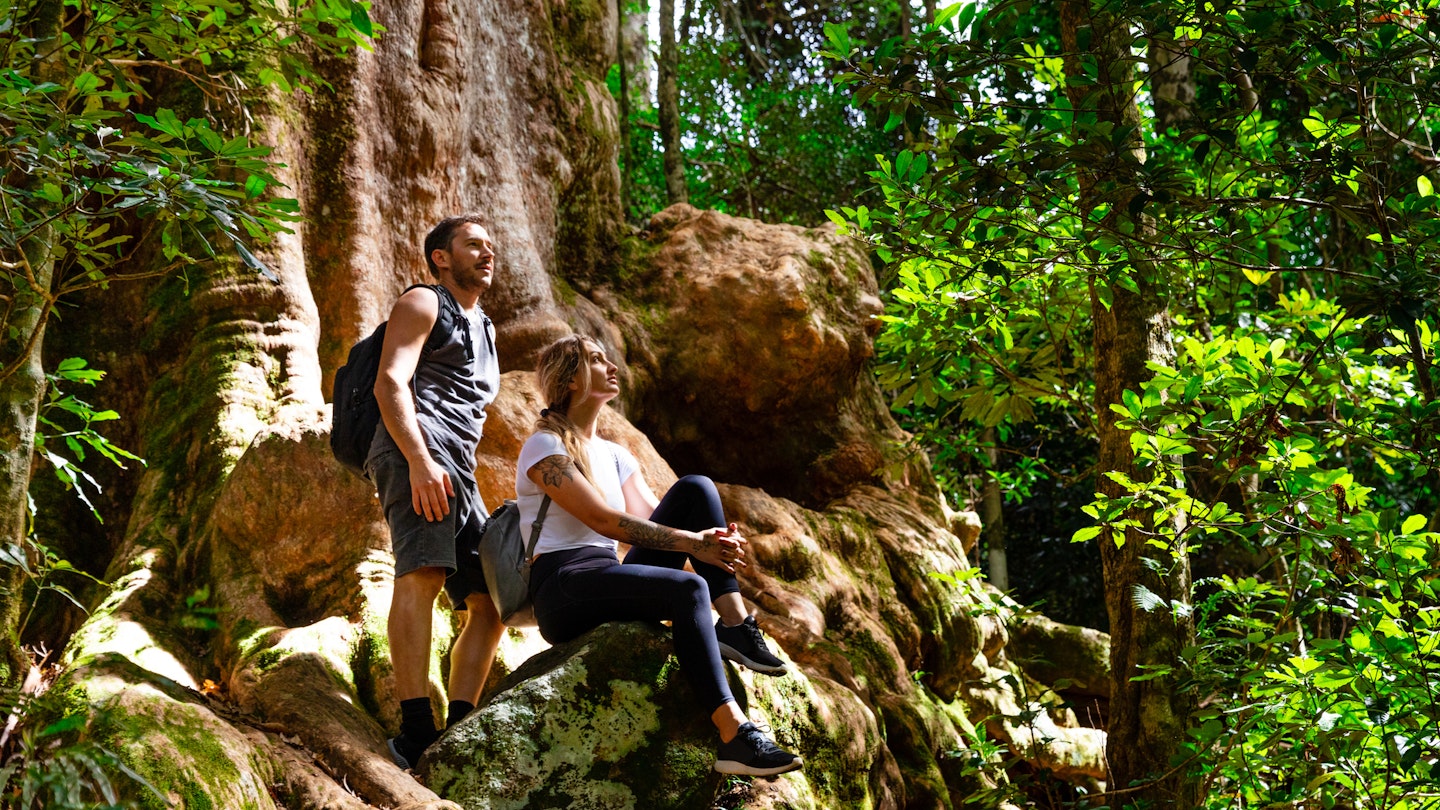Top Hiking Trails in Australia
Bushwalking, or hiking, is incredibly popular in Australia, boasting thousands of kilometers of trails in national parks and wilderness areas. These trails provide excellent opportunities for spotting native wildlife and traverse culturally and historically significant landscapes, complete with relics and interpretative trail markers that offer fascinating insights into Australia’s unique ecology and rich history spanning over 65,000 years.
When to Hike in Australia
The ideal time for hiking in Australia varies by region. Outback hikes are best during the cooler winter months (April–October), whereas hiking in Tasmania and the Australian Alps is more popular during summer (November–March). In northern Australia, the climate becomes steamier, making the May–October dry season the preferred time for hiking.
1. Overland Track (Tasmania)
Best multi-day wilderness hike
65km (40 miles), 5-7 days, moderate
The Overland Track is renowned as Australia’s most famous multi-day wilderness trampl, showcasing the World Heritage–listed mountainscapes of Cradle Mountain-Lake St Clair National Park. The well-marked path, which is navigable between mountains, offers an achievable adventure for experienced hikers with a moderate fitness level. Backpackers must carry their camping gear, as limited dormitory beds in hiking huts are available on a first-come, first-served basis.
2. Kosciuszko Walk (NSW)
Best day hike for active families
13km (8 miles), 4-5 hours, easy to moderate
With reasonable fitness levels, anyone can summit Australia’s highest peak, Mt Kosciuszko. The Kosciuszko Walk invites families to enjoy stunning alpine scenery with several routes leading to the summit. The trail is breathtaking year-round, ideal for appreciating wildflowers between late November and February.
3. Larapinta Trail (Northern Territory)
Best multi-day outback hike
230km (143 miles), 14 days, moderate/difficult
The Larapinta Trail spans the West MacDonnell Ranges, featuring 12 stages that highlight incredible natural attractions. Popular sections include the stunning Brinkley Bluff and Hugh Gorge, offering steep climbs rewarded with breathtaking views. Water tanks are available at trailheads, ensuring hikers can conveniently refill during their journey.
4. Three Capes Track (Tasmania)
Best tent-free multi-day hike
48km (29 miles), 4 days, moderate
The Three Capes Track threads its way through Tasmania’s stunning Tasman National Park, culminating at Cape Pillar. This meticulously maintained trail includes eco-sensitive huts that provide accommodation, reducing the need to carry a tent. Enjoy diverse ecosystems while keeping an eye out for local wildlife.
5. Great Ocean Walk (Victoria)
Best coastal hike
104km (64 miles), 7-8 days, easy to moderate
The Great Ocean Walk hugs the spectacular coastline between Apollo Bay and the Twelve Apostles, showcasing a plethora of breathtaking landscapes. Hikers can carry tents for camping or opt for overnight stays at coastal villages, making this trail a flexible and picturesque option for nature lovers.
6. Border Track (Queensland)
Best rainforest day hike
21.4km (13.3 miles), 7 hours, moderate
The Border Track within the Gondwana Rainforests of Australia World Heritage Area connects the Green Mountains and Binna Burra sections of Lamington National Park. Visitors will find themselves immersed in ancient subtropical rainforest, complete with dramatic vistas and abundant wildlife.
7. Heysen Trail (South Australia)
Best long-distance hike
1200km (746 miles), 50-60 days, moderate
The Heysen Trail traverses South Australia’s diverse landscapes, offering scenic views from key attractions such as Wilpena Pound and the Barossa Valley. Hikers can choose from various campsites along the way, with accommodations available in nearby towns.
8. Thorsborne Trail (Queensland)
Best multi-day island hike
32km (19 miles), 3-5 days, difficult
The rugged Thorsborne Trail leads hikers through the pristine wilderness of Hinchinbrook Island. While challenging, this trail rewards those who persevere with tropical experiences, rich vegetation, and striking waterfalls. Permits limit the number of people on the trail, enhancing the wilderness experience.
9. Bibbulmun Track (Western Australia)
Best hike for people who love the journey
963km (598 miles), 6-8 weeks, moderate
Stretching across Western Australia, the Bibbulmun Track invites hikers to explore the heart of the state’s diverse regions. Regular shelters along the route encourage interaction among travelers, while the abundant flora and fauna keep hikes visually stimulating.
10. Coast Track (NSW)
Best easily accessible overnight hike
26km (16 miles), 2 days, moderate
The Coast Track offers a stunning trek along the Royal National Park’s dramatic coastline. Typically completed in two days, this hike allows for a unique combination of coastal views and the chance to spot migrating whales in cooler months.
11. Australian Alps Walking Track (Victoria, NSW & the ACT)
Best alpine traverse
655km (5-8 weeks), difficult
Winding through some of Australia’s finest alpine regions, this challenging track showcases breathtaking scenery and historic sites. As a remote hike, preparation with food drops is necessary for long stretches without towns.
12. Great North Walk (NSW)
Best urban hike
250km (160 miles), 12-18 days, moderate
The Great North Walk connects Sydney and Newcastle, weaving through beautiful national parks and green spaces. With numerous access points and the option for campsites or accommodations, this urban trail combines accessibility with nature’s beauty.
Tips for Hiking in Australia
Before embarking on hikes across Australia, ensure the trails you choose match your experience and preparedness. Always check local sources for weather and trail updates, and inform someone of your intended route and return time.
- Carry out all trash—never bury it to prevent erosion and other environmental impacts.
- Where toilets aren’t available, bury waste at least 100m from any water source.
- Use biodegradable products when washing near watercourses.
- Follow local fire regulations and consider carrying a portable stove.
- Avoid feeding wildlife to maintain a healthy ecosystem.
- Be mindful of weather changes and wear appropriate clothing.
- No shortcuts—stay on marked trails to preserve the environment.
- Make noise to deter snakes and assess their behavior if encountered.





